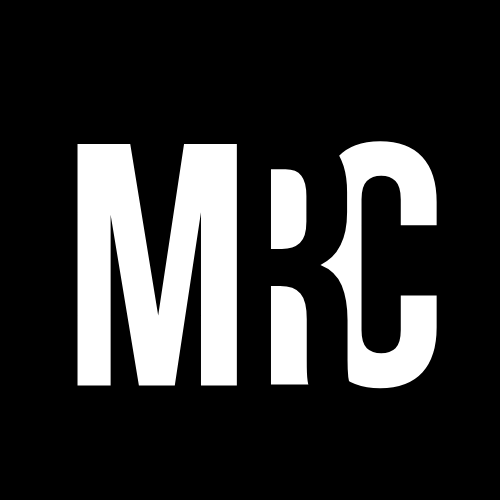Stopping Youth Suicide in Manitoba
The Manitoba Advocate for Children & Youth released a really important report today entitled “Stop Giving Me a Number and Start Giving Me a Person” - this report sadly details the accounts of 22 young women who died by suicide & includes 7 recommendations on how to improve our child welfare/child protection systems. I know that many people are going to think that we don’t need another report - we need action! I agree with these folks but also want to honour the lives of these 22 young people included in the report. Unfortunately, I know the pain relatives who are left after the suicide. We are filled with questions that will never be answered and too frequently a system that doesn’t appear to want to change with no willingness to implement or even listen to these reports. I can name so many more than 22 young lives I have personally lost to suicide - that’s 22 other times I have looked at our system and the reports they don’t seem to listen to - and try my hardest to prevent this from happening again to another family and community. Time and time again, I feel like I am too late, like I haven’t done enough -these feelings are part of my grief that I carry for my lost relatives. It causes me to often ask myself how we can grieve in a good way when we lose our relatives in traumatizing circumstances like suicide?
I have an often repeated story that I call “Pieces of Sean” that I’d like to share in honour of all the young people we have lost. It talks about some ways we can work hard today to not only celebrate their memory, but live a good life for them and help change these systems so we never lose another relative to suicide so soon ever again. Watch the video by clicking here.
The Recommendations
Obviously I recommend that you read the full report, but I of course want to emphasize the report’s 7 recommendations & encourage you and your helpers to choose one (or seven) to try and move forward in the immediate future. There’s a summary that includes the findings on page 93/94 of this report. I have replaced the repetition of MB Advocate for Children and youth with the acronym MACY throughout the rest of my post. Here are the recommendations:
CONDUCT A GAP ANALYSIS: MACY recommends that the Department of Health, Seniors and Active Living conduct a gap analysis of the youth mental health and addictions system, based on the tiered model proposed in the Virgo Report. The gap analysis ought to speak to the overall transformation framework and strategic plan for child and youth mental health and addictions services. Further, the Manitoba Advocate recommends the gap analysis, framework, and strategic plan is released publicly to Manitobans.
DEMONSTRATE EQUITABLE ACCESS TO SERVICES: MACY recommends that the Department of Health, Seniors and Active Living demonstrates its framework and strategic plan for transformation of the youth mental health and addictions systems in Manitoba ensures equitable access to services across all areas of Manitoba, which are tailored to the unique needs of children and youth in our province.
TRAIN WORKERS ON TRAUMA AND ITS EFFECTS: MACY recommends that the Government of Manitoba provide early childhood trauma education and training about trauma and its effects to service providers across all government departments delivering services to children and youth.
HELP FAMILIES LEARN WHERE THE RIGHT RESOURCES ARE: In line with Article 24 of the United Nations Convention on the Rights of the Child, MACY recommends that the Government of Manitoba conduct an annual review of what therapeutic trauma interventions are available to children and youth in Manitoba and create an inventory of resources, whether the resources require formal referrals from service providers or are open for self-referrals, any associated eligibility criteria (age, location, care status, etc.) and promote the annual inventory and its findings in the public.
CREATE MORE YOUTH HUBS: MACY recommends that the Department of Health, Seniors and Active Living, in collaboration with rural communities in Manitoba, and the federal government, where applicable, implement recommendation 4.8 of the Virgo Report: Building upon the successful experience of the NorWest Youth Hub and lessons learned from the experience of other provinces, develop a provincial plan for scale-up of the youth hub model, or similar models of integrated youth services, taking advantage of support from philanthropy as it may be available (Virgo Planning, 2018, p. 235)
CREATE FOCAL POINTS OUTSIDE OF WINNIPEG: MACY recommends that the Department of Health, Seniors and Active Living, in collaboration with rural and First Nations communities in Manitoba, and the federal government, where applicable, implement recommendation 2.11 of the Virgo Report, as summarized below: In the RHAs other than the WRHA, create mental health hubs (as identified in the Peachey report), with a view to: (a) developing these as integrated regional mental health and substance use/addictions (SUA) “focal points”, and (b) harmonizing a core set of regional services and supports to the hospital emergency departments and crisis services including:
Screening, assessment and support for SUA.
24/7 access to psychiatric consultation and acute assessment/treatment services.
A core set of professionals in addition to psychiatrists with capacity in SUA support – e.g., clinical psychologists and psychiatric emergency nurses
Cross-trained mental health and addiction liaison workers co-located in hospital emergency departments/other hospital programs.
Infrastructure and staffing to ensure safety and security of patients and staff.
Links to community mental health and addictions services, including centralized intake (Virgo Planning, 2018; full wording may be found at p. 225).
CREATE LONG-TERM TREATMENT FOR YOUTH WITH THE HIGHEST NEEDS: The Manitoba Advocate for Children and Youth recommends that the Government of Manitoba develop an inpatient or community-based long-term treatment resource that offers stabilization, assessment, treatment, and aftercare for youth who are at the top tier of mental health and addictions care needs, and for whom less intensive options have been ineffective.
The Most Important Recommendation
I may be bias (I know I am lol) but if I had it my way, recommendation #7 would be moved to #1 & it would be expanded a little but. The addition I would recommend would be as it relates to young people who need to be taken into medical facilities for mental health/addiction reasons. I know currently that these young people are often placed into stabilization units for a number of days where they are provided with therapeutic supports & other health/wellness interventions. I love all of this so far. Where I take issue with this process is that as far as I know, little to no education, resources or supports are given to the parents, guardians or adults responsible for that young persons’ home environment. So that’s what I would add to that recommendation, concurrent education & therapeutic supports for families, this would enable families to provide the custom, ongoing care that young person needs to be healthy in their home environments.
MC EDIT TO #7: “…develop an inpatient or community-based long-term treatment resource that offers stabilization, assessment, treatment, and aftercare for youth AND THEIR FAMILIES/GUARDIANS who are at the top tier of mental health and addictions care needs, and for whom less intensive options have been ineffective.“
Technology & Mental Health
I have been involved in advocating for more accessible technology related options for youth (like the texting service with Kids Help Phone as one example) for many years. I am and always have been an advocate of mental health services being as ACCESSIBLE as possible. This means when we are helping people in need, we have to go to them and not expect them to come to us, especially while they are in pain. There are many people who have the goal of reducing screen time among youth as a means of supporting their mental health and I agree with that premise too. But I also think we have to take every available opportunity, be in as many places to offer help or support as possible as around the clock as we can manage - why? Because young people in Canada deserve it. Providing access to mental health supports via technology is not the only way to go - it’s a band-aid and will only be of any use if we are also working on longer term system solutions.
I encourage people to participate in as many trainings as possible at all times (& especially at this time of physical distancing) so we can use technology to sharpen and build our skills. I want to put a plug in for the texting crisis responder training provided by Kids Help Phone that has many hours of modules for you to participate in from home that prepare you to support youth reaching out to KHP through 686868. I encourage this because there are many transferable skills they share in the training that can help us be good mental health helpers to the youth around us that we have relationships with that whose mental health we may already be supporting by text!
Some of the longer term solutions that we truly need can be addressed by listening to the stories of these 22 young people and the 7 recommendations. It’s not enough by a long shot - and every day we fail to radically transform/increase the services youth have access to BEFORE they are in crisis is another day we have all failed them. I’m gonna send messages to young people in my circle today to remind them that they are loved and cared for - not because they are in crisis, but because I believe we should love people so much that the crisis never has to happen in the first place.
I’m not gonna wait to reach out to the young people I love & neither should you.



